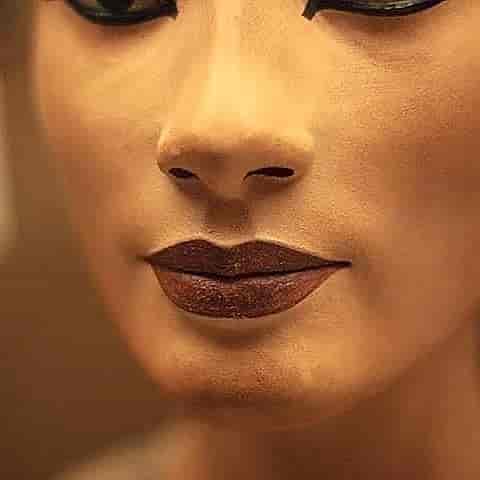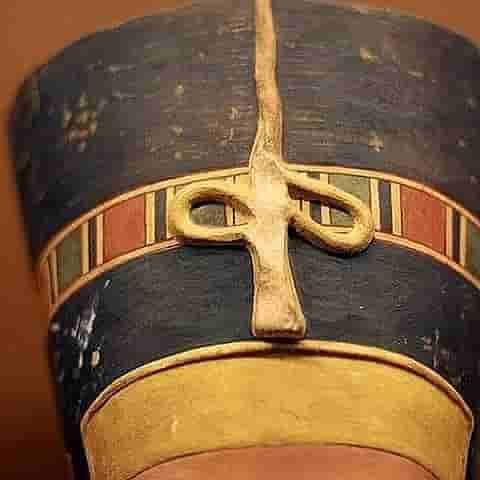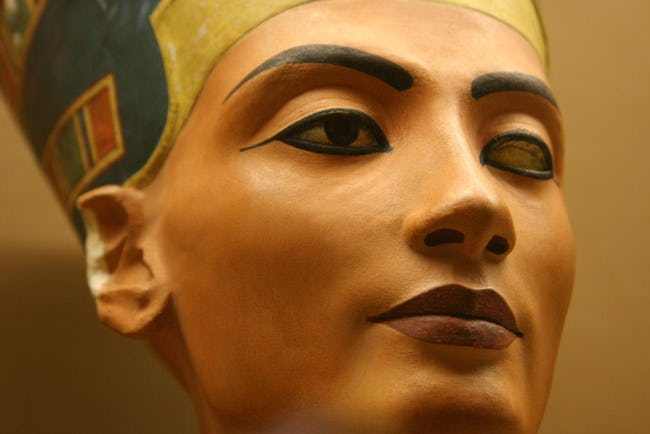Few archaeological discoveries have caused as much interest as that of the poly-chrome bust of Nefertiti. Its exhibition for the first time in Berlin in 1924 made this queen of Egypt world-famous, of whose life there was hardly any data at that time.
Main wife of Pharaoh Amenhotep IV, better known as Akhenaten, she was the protagonist of one of the most exciting periods in the history of ancient Egypt.
The work shows, with overwhelming simplicity, a distinguished and serene woman dressed in royal insignia.
Its discoverer, Ludwig Borchardt, stated: “Any description is useless, you have to see it!” The world fell for her charms and she immediately became an icon of beauty.
Thus, the meaning of her name was honored, “the beauty has come.”
In the workshop of Thutmose
An Egyptian workman discovered the bust on the afternoon of December 6, 1912 during the excavations of the German Society for Oriental Studies at Tell El-Amarna.
The site, one of the largest in Egypt, hides the city of Akhetaten, founded by Akhenaten as the new capital of the country and seat of the new national god, Aten.
The head of the German mission was archaeologist Ludwig Borchardt, who led the excavation rigorously. The bust came to light in the southern neighborhood, in one of the artist’s workshops that existed in the city.
Its owner was the “head of the works, the sculptor, Thutmose”, titles that indicate that he was in charge of this guild. The house had private rooms where he lived and others that he used as a place of work for himself and his disciples.
The bust of Nefertiti was found in a small warehouse. More than fifty works were scattered there, most of them cast in plaster of heads along with busts and parts of unfinished statues.
At the time of the discovery, the remains of the shelf in which it had been placed could be distinguished next to the bust of the queen. The most surprising thing is that, once the sculptor finished saving the works, he had the door sealed.
The reconstruction of the last moments of the workshop seems clear: the teacher was leaving Amarna and returning to Thebes. And it is that, with the death of Akhenaten, the city was gradually abandoned.
He took most of his work with him, but he put away what he did not consider necessary for his new life, perhaps thinking of returning sometime.
A masterpiece
The presence of the Nefertiti bust in the workshop makes sense considering that it was not conceived to be exhibited in any temple, but to be used as a sculptor’s model. In fact, the bust never existed as a genre in pharaonic art.
It seems that the main purpose of the work was to show the inlay technique of the eyes. The right one is formed by a rock crystal, on the back of which black pigment was applied to represent the pupil and the iris, which was glued to the basin with wax. But the left one was left empty.
It has been said that it came off when the sculpture fell from the shelf, although Borchardt himself searched for it without success. Or even that it was due to an eye disease of the queen or a fit of jealousy from Thutmose himself.
The truth is that it was never inserted. The latest analyzes have shown that there are no remains of any type of glue in the left basin.
How do we know it’s her?
In the workshop, many models of heads of different members of the royal family and the court were found. And although the bust of Nefertiti does not contain any inscriptions, her identification is indisputable. The greatest proof is the presence of the tall blue crown.
The softness of its features, compared to the more exaggerated forms that characterize Amarnian art, is a criterion used by specialists to date the work.
For some, the bust was executed when the court still resided in Thebes; For others, it represents the new official face of the queen some time after the transfer, perhaps around the year 8 of Akhenaten‘s reign.









